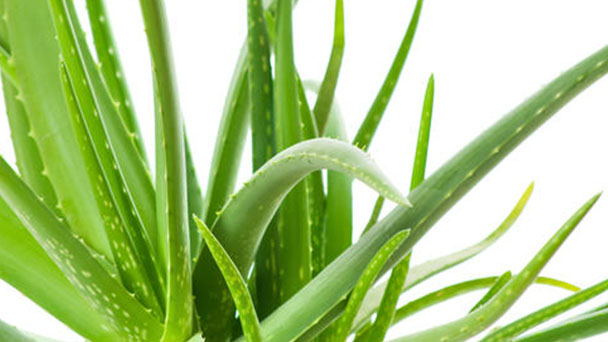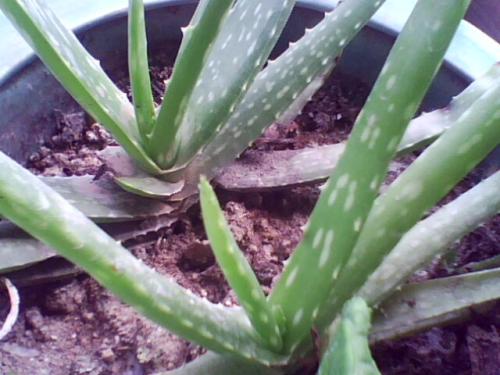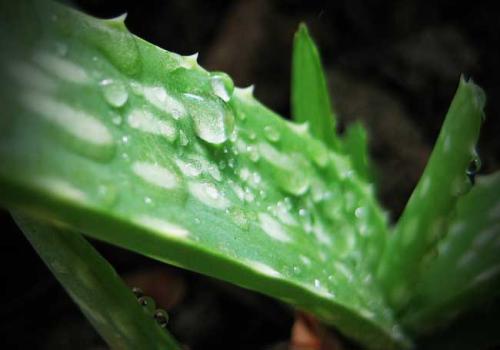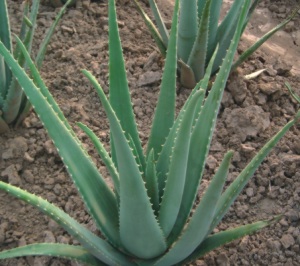Aloe care tips
Written by Maggie
Sep 09 2021

Aloe is an edible and medicinal plant that has obvious health benefits and is lauded as the "medicine cabinet for the family." The application scope of aloe is very wide, can be processed into medicine, health care products, etc., or the main raw material of many beauty products. So how to care for Aloe? Let's take a look at Aloe care tips.

Aloe - Most Common House Plant
How to care for Aloe having dark spots
Clean and maintain it if it is caused by hand SAP. Stop watering if it is overwatered. Change the soil if it is serious. keep the leaves clean if ventilation is poor. improve indoor air circulation frequently, and prevent the disease.
1. Aloe Normal maintenance
Aloe is a common potted succulent plant found in homes. It's rich in juices that drip down on the hands and turn dark brown when treated with air conditioning. This can lead to dark spots, which should be cleaned and disinfected to prevent infection.
2. Stop watering Aloe
Aloe is very drought-tolerant. If you water too much, your soil will become overwatered, your roots will fail to grow, and you will develop spotty stems and leaves. Stop watering immediately, or in severe cases, change the soil properly, and water thoroughly afterwards.
3. Pay attention to ventilation for Aloe
Aloe stem leaf is more sensitive to changes in the environment. If put it in smoke more during the growth environment, or poor ventilation, leads to many black spots on the stem leaf, which is one reason why it has a black spot on Aloe. Aloe is better in peacetime to maintain the cleanness of the blade, also note ventilation, to facilitate the photosynthesis of leaves.
4. Disease and insect prevention of Aloe
When Aloe is exposed to anthrax, brown spots, leaf blight, rust, etc., there are many irregular patches on the leaves, which will form black patches over time. The leaves should be cut and destroyed promptly. The leaves should be kept clean and dry, and sprayed with a thin solution of carbapenem or chlorothalonidine.

How to care for aloe leaf withered and curled
The withered and curled aloe leaves may be due to soil deterioration, lack of water, too little fertilization or environmental discomfort. It is best to place aloe in the indoor semi-shade and ventilated place for cultivation at ordinary times. Aloe has a very strong drought resistance ability. When growing, aloe should be a timely replacement of soil.
1. Soil for aloe
Aloe has a high ornamental value, so what happens when Aloe leaves are shriveled and curled when growing? Aloe likes to grow in loose, breathable soil. If you don't change the soil for a long time, the leaves will dry out and become curly. Replace the soil.
2. Moisture for aloe
Aloe is very drought-resistant. You don't need to water the plant too much. But water the plant when it is growing. Aloe is best watered when it is dry and wet, keeping the soil moist.
3. Fertilizer for aloe
Aloe leaves can also be shriveled and curvy because the plant lacks potassium, and proper potassium fertilization can make the leaves grow better and give them more shine. Aloe does not require much fertilizer. Fertilize the plants three or four times a year. Dilute the fertilizer with water before each application.
4. Environment for aloe
Aloe likes to grow in a semi-ventilated environment. If you keep the plant in a dark, stuffy room for too long, the leaves will dry out and curl up. Transplant the plant to a ventilated area immediately, and spray water on the plant to help it get used to the environment as quickly as possible.

Latest Updated
- Benefits of Bugleweed - 7 Science-backed Health Benefits
- Bugleweed Dangers & Side Effects - Is It Poisonous?
- How to Plant Evergreen Trees - What You Should Know
- When to Plant Evergreens - Grow Guide for Evergreen Trees
- 12 Wonderful Evergreen Shrubs for Your Garden
- 12 Popular Evergreen Plants with Pictures for Beginners
- When And How To Prune A Lilac Bush Like a Pro
- How to Grow & Care for Lilac Vine (Hardenbergia Violacea)
- Japanese Lilac Tree (Syringa Reticulata) Care & Propagation Guide
- Shumard Oak Pros and Cons - What to Know
Popular Articles
- Winter maintenance of Antirrhinum Majus
- How to Grow Terminalia Mantaly Tree
- How to Grow and Care for Crossostephium Chinense
- How to grow Antirrhinum Majus in spring
- Peristeria Elata (Dove Orchid) Profile: Info & Care Guide
- Underwatered Snake Plant (Sansevieria Trifasciata) - Signs And How To Fix
- How to Care for Brazilian Jasmine Plant (Mandevilla Sanderi)
- How to Grow & Care for Graptopetalum Purple Delight in Summer
- Rosa Chinensis (China Rose): Plant Growing & Care Tips
- How to Care for Baby Sun Rose (Aptenia Cordifolia)